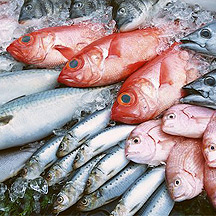Food processing preparation and cooking techniques don t significantly reduce the amount of mercury in fish.
Fish that don t contain mercury.
It binds to a person s tissue proteins such as muscle.
Fish take up mercury from streams and oceans as they feed.
As small fish are eaten by larger fish up the food chain concentrations of mercury and pops increase so that large predatory deep ocean fish tend to contain the highest.
Fish products have been shown to contain varying amounts of heavy metals particularly mercury and fat soluble pollutants from water pollution species of fish that are long lived and high on the food chain such as marlin tuna shark swordfish king mackerel and.
However some types of fish can contain high levels of mercury.
Fish and shellfish concentrate mercury in their bodies often in the form of methylmercury a highly toxic organomercury compound.
Because tuna steak generally contains higher levels of mercury than canned light tuna when choosing your two meals of fish and shellfish you may eat up to 6 ounces one average meal of tuna.
These figures are measured in micrograms of mercury per 4 ounces of.
Opt for organic farm raised seafood that contains lesser amounts of mercury such as wild alaskan salmon eel crab shrimp and catfish.
However nearly all fish and shellfish contain traces of mercury a toxic metal and some seafood contains other contaminants known as persistent organic pollutants pops.
This mercury is in the more toxic methylmercury form.
That s because it s a great source of protein micronutrients and healthy fats.

